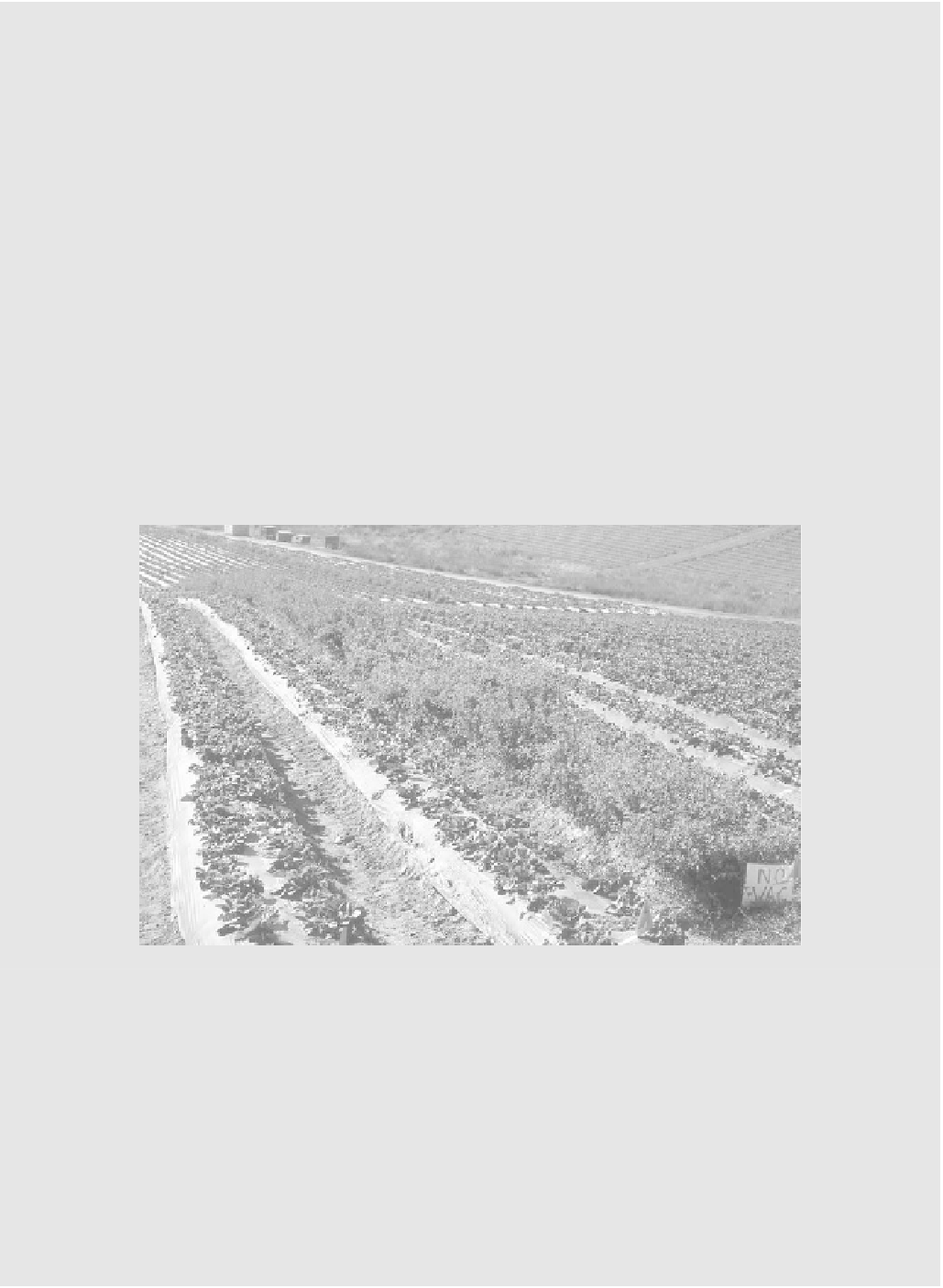Agriculture Reference
In-Depth Information
Level 3 conversion
.
It was at this point that a whole-system approach began to come into play. Based on the
concept that ecosystem stability comes about through the dynamic interaction of all the component parts of the
system, the researchers and farmer conceived of ways to design resistance to the problems created by the simplified
monoculture. The farmer realized he needed to partially return to the traditional practice of crop rotations that had
been used before the appearance of MeBr. The researchers used their knowledge of ecological interactions to redesign
the strawberry agroecosystem so that diversity and complexity could help make the rotations more effective, and in
some cases, shorter. Testing of these ideas is ongoing. For example, mustard covercrops were tested for their ability
to allelopathically reduce weeds and diseases through the release of toxic natural compounds. Broccoli is being
tested as a rotation crop since it is not a host for the
Verticillium
disease organism, and broccoli residues incorporated
into the soil release biofumigants that reduce the presence of disease organisms (Muramoto et al., 2005).
Rather than rely on biopesticides, which still have to be purchased outside the system and released, the
researchers and farmer have undertaken redesign approaches intended to incorporate natural control agents into
the system, keeping them present and active on a continuous basis. For example, they tested the idea that refugia
for the
P. persimilis
predator mite could be provided, either on remnant strawberry plants or trap-crop rows around
the fields. Perhaps the most novel redesign idea is the introduction of rows of alfalfa into the strawberry fields as
trap crops for the western tarnished plant bug (
Lygus hesperus
). The pest can cause serious deformation of the
strawberry fruit, and because it is a generalist pest, it is very difficult to control through input substitution. By
replacing every 25th row in a strawberry field with a row of alfalfa (approximately 3% of the field), and then
concentrating control strategies on that row (vacuuming, biopesticide application), it was possible to reduce Lygus
damage to acceptable levels (Swezey et al., 2004). The ability of these alfalfa rows to also function as reservoirs
of beneficial insects for better natural pest control is now being tested as well (Figure 20.4).
FIGURE 20.4
Alfalfa rows used as a trap crop for pests and refugia for beneficials in a strawberry agroecosystem.
Such field-scale diversification is an example of level 3 of conversion.
Level 4 conversion
.
Consumers have become a very important force in the conversion of agroecosystems to
more sustainable design and management. The fourth level of conversion made its debut when students at the UC
Santa Cruz campus convinced the campus dining service managers to begin integrating local, organic, and fair-
trade items — including organic strawberries — into the meal service. There are other indicators that a culture of
sustainability is beginning to take shape. Consumers are increasing the demand for organic produce, allowing
organic farming to become increasingly important. In the two central coast counties, where so many strawberries
are grown, there were a total of 46,775 organic-certified acres in 2004, more than ten times the organic acreage
recorded in 1997. The total farm gate revenue from organic farming in these counties was $152 million in 2004,
representing a dramatic increase of more than 1400% from 1997 (CDFA, 2004). A parallel increase in organic
strawberry production occurred over this same time period, as can be seen in Table 20.2



Search WWH ::

Custom Search